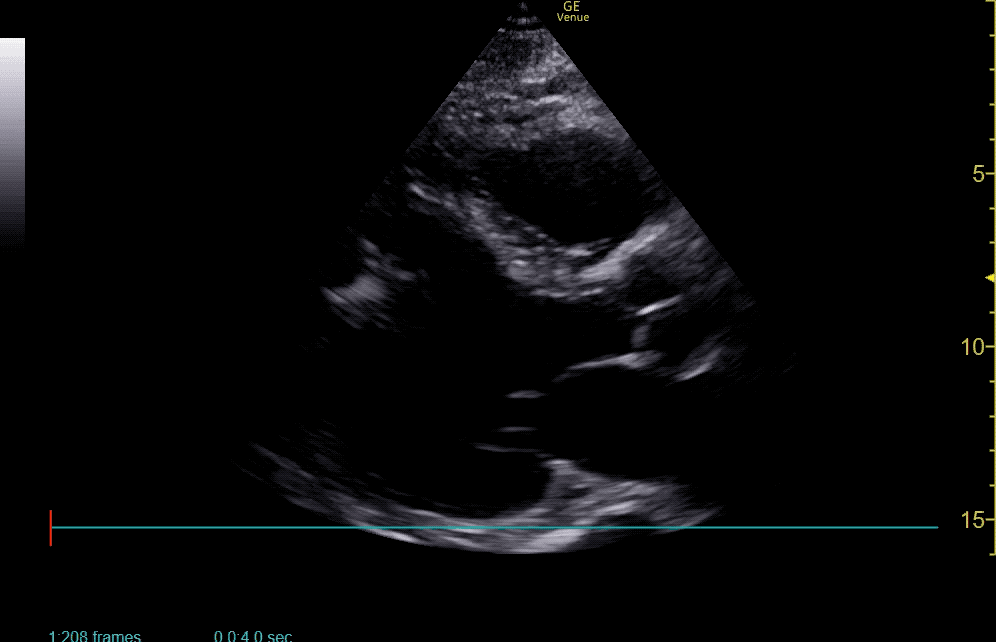Brief H&P:
A 48 year-old male with a history of congestive heart failure s/p left ventricular assist device is brought in by EMS with low-flow alarms. According to prehospital report, the patient had otherwise been in his usual state of health and had been shocked by his ICD multiple times prior to their arrival. No vital signs could be obtained en route.
On arrival in the emergency department, the patient was awake and responding appropriately to questions. His MAP was 80mmHg, an audible whir was auscultated from his device and the skin surrounding the percutaneous exit site appeared normal.
ECG
POCUS
The patient’s device was inactivated with a magnet to prevent further ineffectual shocks. An arterial line was placed for continuous blood pressure measurement. He was sedated and externally defibrillated with return to normal sinus rhythm prior to admission to the CCU.
An Algorithm for the Evaluation of Unstable LVAD1
Reference
Stenberg R, Shenvi C. Targeted evaluation of patients with left ventricular assist devices and shock or hypotension. Ann Emerg Med. 2020;76(1):34-41.



